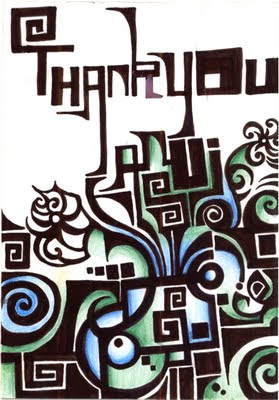1.
We were generally discussing stories or gossips around architecture the other day.
Apparently, Peter Cook's (Archigram) name was to be considered for the Prtizker prize, but was eventually rejected. The argument was that he hasn't built any structure till date (except one), to be considered for the Pritzker. The reason he was selected for the Pritzker was the fact that his conceptual works have influenced the architecture community to a large extent. Also, his contribution to the academic field was immense. To this, the critics argued that if it was so, then one could also be a painter and get the Pritzker. The question was whether it was necessary for an architect to build. On the other hand, if Pritzker was to be opened to those who "influenced" architecture, then why not also nominate painters, musicians, singers, artists, etc., since all these disciplines have influenced architecture in some way or the other.
Thus, his name was finally dropped, it seems.
2.
Corbusier planned Chandigarh as an absolutely modern city. (We know of his famous sketch of the bullock against the building, suggest his first impression of un-modern India)This modern city was to break away from the shackles of the past.. Thus there were to be no memorials or statues to be erected anywhere in the city. The city was to be kept free of any such things. Corbusier didnot plan a space for any such statue / emblem (except ofcourse his Open hand!).
Ironically, it seems that after Corbusier's death, and on completing about 5 decades of Chandigarh, the Government of Chandigarh decided to commemorate something to the great man. They proposed his own statue to be erected in the city! Now isn't that completely laughable?
We were generally discussing stories or gossips around architecture the other day.
Apparently, Peter Cook's (Archigram) name was to be considered for the Prtizker prize, but was eventually rejected. The argument was that he hasn't built any structure till date (except one), to be considered for the Pritzker. The reason he was selected for the Pritzker was the fact that his conceptual works have influenced the architecture community to a large extent. Also, his contribution to the academic field was immense. To this, the critics argued that if it was so, then one could also be a painter and get the Pritzker. The question was whether it was necessary for an architect to build. On the other hand, if Pritzker was to be opened to those who "influenced" architecture, then why not also nominate painters, musicians, singers, artists, etc., since all these disciplines have influenced architecture in some way or the other.
Thus, his name was finally dropped, it seems.
2.
Corbusier planned Chandigarh as an absolutely modern city. (We know of his famous sketch of the bullock against the building, suggest his first impression of un-modern India)This modern city was to break away from the shackles of the past.. Thus there were to be no memorials or statues to be erected anywhere in the city. The city was to be kept free of any such things. Corbusier didnot plan a space for any such statue / emblem (except ofcourse his Open hand!).
Ironically, it seems that after Corbusier's death, and on completing about 5 decades of Chandigarh, the Government of Chandigarh decided to commemorate something to the great man. They proposed his own statue to be erected in the city! Now isn't that completely laughable?



























